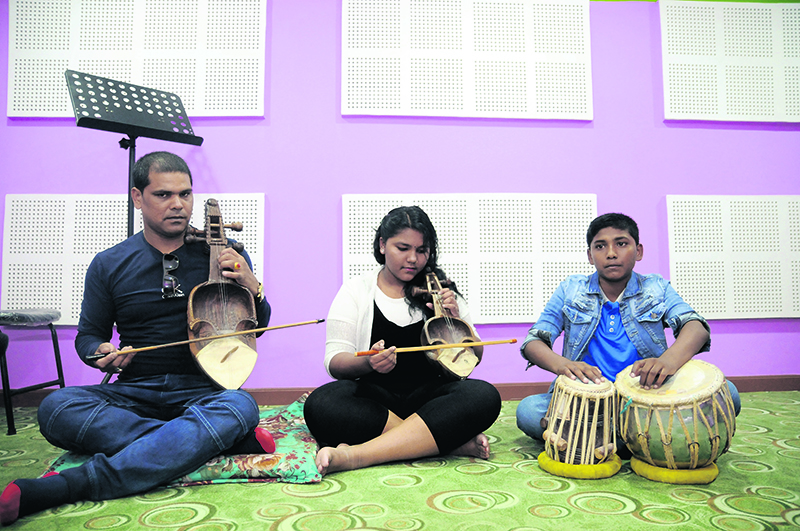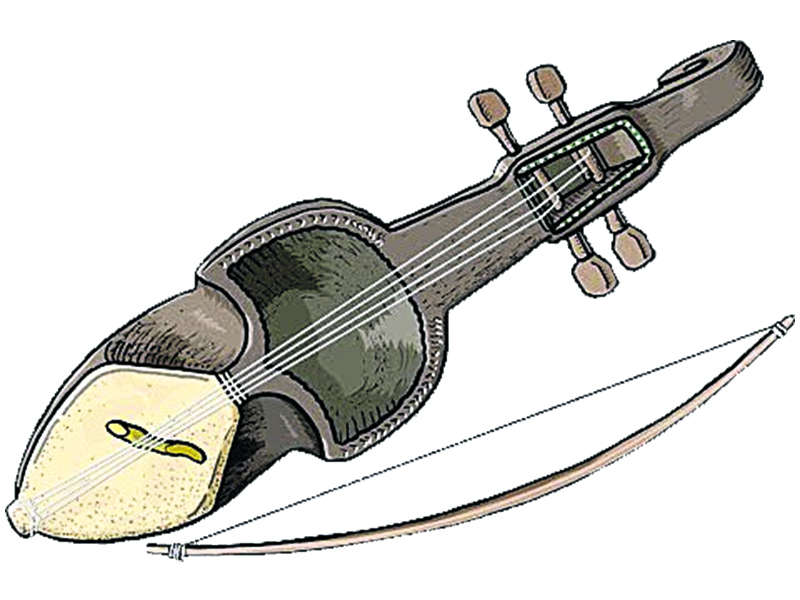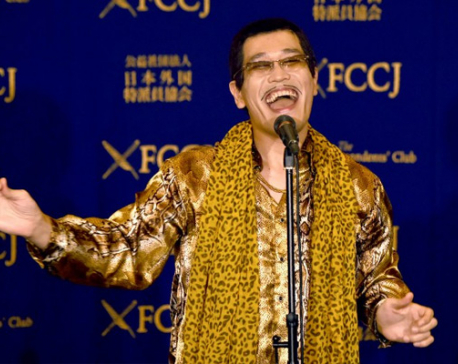
OR

When he was nine years old, he used to sit on his father’s lap while his father taught him how to hold a sarangi, a four stringed musical instrument. With an ear for tunes and being keen to learn as well, Dharmaraj Gandarbha soon began playing the instrument with ease and, in time, went on to strum the sarangi in, on a rough estimate, 1200 Nepali songs. Perhaps, belonging to a family where generations had been making their livelihood through music also had a role to play in the quick learning.
“Sarangi is often associated with the Gandarbha community who are considered Dalits and this caste stigma may be one of the reasons why even today people hesitate to learn the instrument,” says Dharmaraj adding that, to a large extent, playing a sarangi is considered a caste based occupation even today.
However, the history of sarangi is far from limited. In most countries, music has mostly served the purpose of entertainment. The musical culture of places such as Pokhara, Arghakhachi, Tanahu, Bhojpur etc of Nepal has, however, been slightly different. At a time when there was no popular media to communicate news to different parts of the county, Gandarbha sangeet or Gaine geet played an integral role in carrying news from one village to another. The information was communicated through folk songs sung to tunes of sarangi, which was traditionally only made by people of the Gandarbha community.
“I remember my Grandfather used to go from one village to another communicating various news, events, and tragedies though his songs. Once he left the house, he came back only after ten to fifteen days” says Dharmaraj. He explains that the strings of the sarangi were originally made out of a single nerve from a deer or goat’s intestine but now nylon threads are used instead.
“There are still some elderly people in the villages who earn their living by singing Gandarbha songs. But now with the advent of globalization and the various technologies that have come with it, this occupation serves no purpose and it’s almost extinct, so to say,” he adds. Today, even villages have television, radios, and mobile phone hence conveying news door to door through songs has become redundant. Previously, after conveying news through the medium of music, Gandarbhas would often get money and food from the villagers. And this was their way of life.
Despite its rich history, sarangi players are still looked down upon. According to Dharmaraj, many people consider singing Gandarbha sangeet inferior to other occupations and some even think of such singers as beggars. “I used to teach music at a school which offered a variety of music lessons such as guitar, tabala, madal etc. Children who wanted to learn sarangi were made to raise their hands. It was disheartening to see that in the entire school only two girls were actually interested in learning this art form,” he says.
Also, the fact remains that the Gandarbha community is one of the most suppressed communities in villages and one of the negative impacts of this discrimination is their lack of access to education. According to Dharmaraj, the community has failed to promote this art form because of illiteracy. The lack of exposure, education, and confidence has made them unable to showcase their skills and talent in the field of music.
Dharmaraj has represented Nepali music in various international platforms and he says that he realized the importance of education only after his first trip abroad. “Folk musicians in other countries are able introduce their art to the world because they are educated,” he says. He wishes the government would intervene and do something to preserve and promote this dying art because his community definitely can’t seem to rise above the stigma without help from the outside.
However, on the brighter side, even though Gaine geet may have lost its popularity sarangi is becoming increasingly admired. The tune of sarangi has almost become synonymous to Nepali music and culture. He is grateful that this music is being increasing accepted in our society. “Kathmandu is an expensive place and the fact that I’m able to afford a flat here and educate my children in good schools proves that this form of art has good scope,” he explains.
He further adds that since every art evolves with time, Gandarbha sangeet also has the ability to adapt itself with time while preserving its original identity. And in fact, Gandarbha sangeet today seems to be taking on a new form. Although these songs can rarely be heard in villages, they are sometimes part of movies where singers talk about the misery of the country or disseminate various stories and information. “In whichever form it may be, my only concern is that it should be preserved for future generations,” says Dharmaraj.
His son, Arun Gandarbha, however aspires to be the Tabala player. His style is different from his fathers’. He enjoys giving a classical touch to modern English songs like Despacito and Shape of You. But Dharmaraj won’t give up. As a musician, he believes it is his responsibility to preserve Gandarbha sangeet. Thus, he is teaching his daughter to play the sarangi as he feels there are very few female sarangi players in the country. “Every person, irrespective of gender, should be capable enough to preserve their communities’ skills and art,” he concludes.
swasti30@gmail.com

You May Like This

Leader Khanal slams govt for dancing to the tune of foreigners
ILAM, Feb 10: CPN (UML) senior leader Jhalanath Khanal has accused the incumbent government for dilly-dallying the announcement of elections... Read More...

Japanese nonsense tune, Justin Bieber's 'Favorite', now in Guinness record
TOKYO, Oct 29: A Japanese comedian's nonsense tune that became an internet sensation after Justin Bieber recommended it has entered... Read More...

Changing our tune
The majority of us were brought up to respect the national anthem and this involves showing deference whenever it is... Read More...





Just In
- MoHP cautions docs working in govt hospitals not to work in private ones
- Over 400,000 tourists visited Mustang by road last year
- 19 hydropower projects to be showcased at investment summit
- Global oil and gold prices surge as Israel retaliates against Iran
- Sajha Yatayat cancels CEO appointment process for lack of candidates
- Govt padlocks Nepal Scouts’ property illegally occupied by NC lawmaker Deepak Khadka
- FWEAN meets with President Paudel to solicit support for women entrepreneurship
- Koshi provincial assembly passes resolution motion calling for special session by majority votes






_20220508065243.jpg)






Leave A Comment